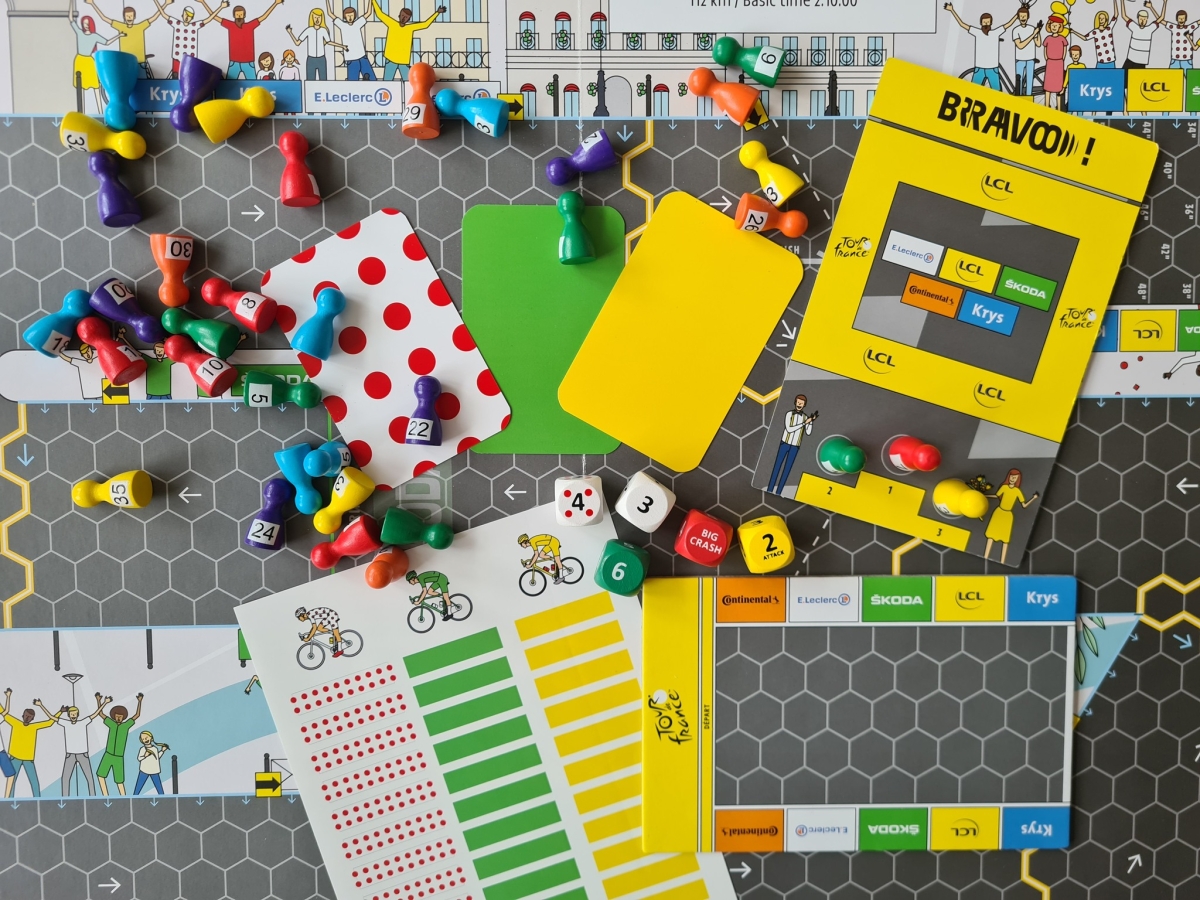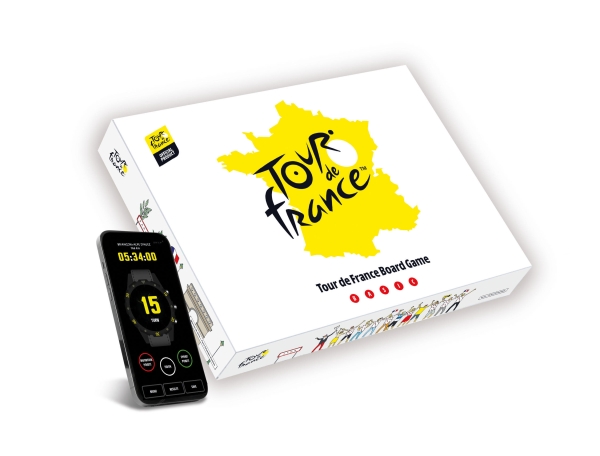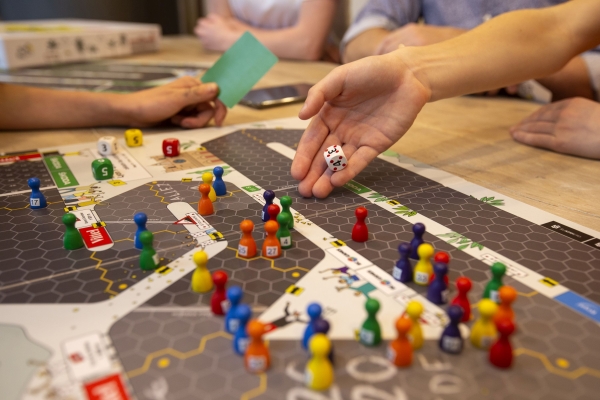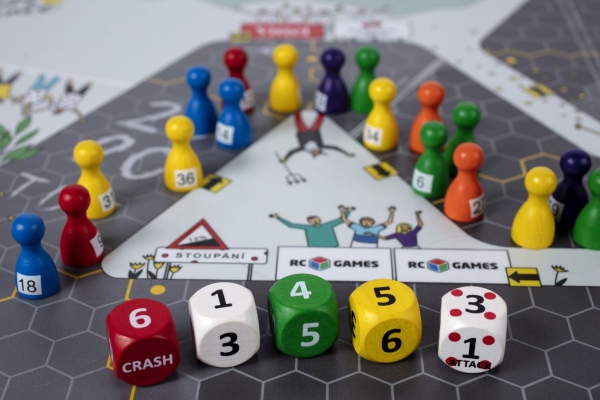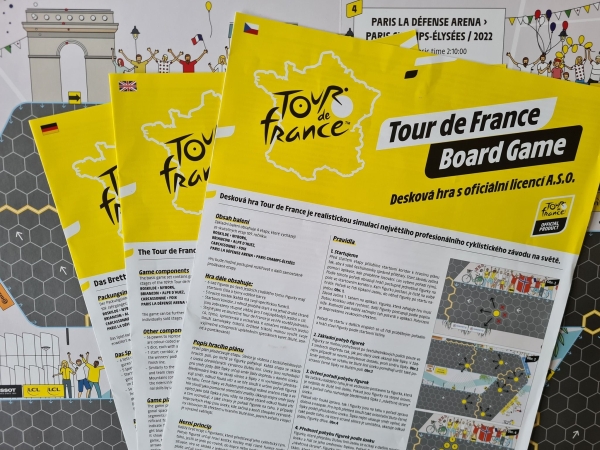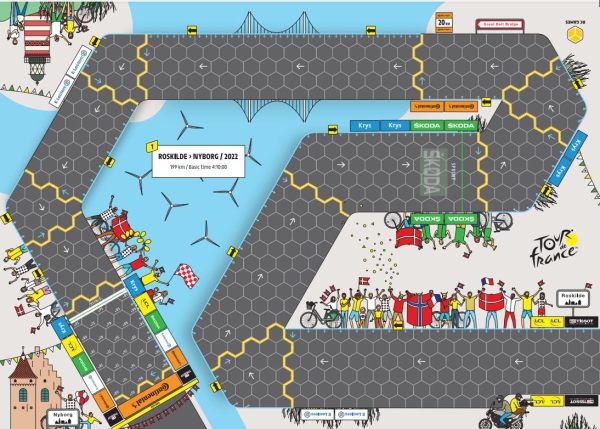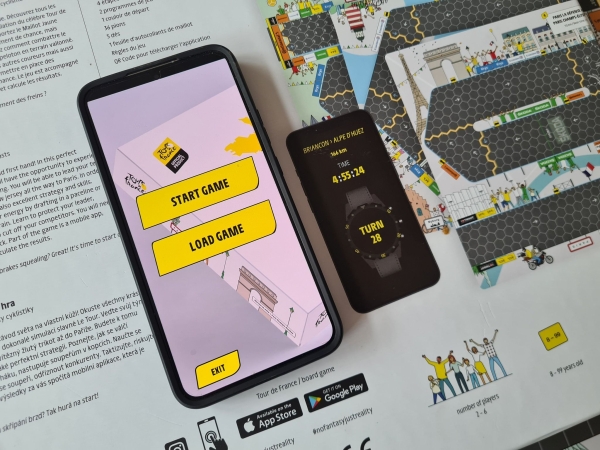Tour de France Board Game
The Tour de France board game is a realistic simulation of the largest professional bicycle race in the world.
Experience the world's most famous cycling race for yourself! You'll need not only luck, but also strategy! Learn how to fight the wind, save your strength while riding in the hook, and take on your rivals in the hills. The mobile app included in the game will calculate the times and results for you!
Game components
The basic game set contains game plans for 4 stages, that copy real stages of the 109th Tour de France race.
ROSKILDE > NYBORG,
BRIANCON > ALPE D´HUEZ,
CARCASSONNE > FOIX
PARIS LA DÉFENSE ARENA > PARIS CHAMPS-ÉLYSÉES
The game can be further extended by additional individually sold stages.
Other components:
36 pawns to represent six teams, each with six riders. The pawns are colour-coded and carry number bibs.
5 dice, each with a different function.
1 start corridor, where the race begins. The reverse side carries the winners’ podium for the three most successful cyclists on the finish line.
Similarly to the real Tour de France, the game involves individual and team classifications as well as the Sprinters’ and King of the Mountains competitions. A pack of jersey stickers is used to mark the riders in lead. Jersey holders can benefit from their exceptional skills by using special cards (yellow, green, polka dot).
Game plan description
The game plan represents a stage. The road is made up of hexagonal spaces on which the pawns move. Each stage consists of segments separated by distinct yellow lines. The segments are significant for the direction in which the riders move. White arrows indicate forward direction of movement in that segment. The light blue line on the edge of the road and the arrows coming from it show the direction from which the wind is blowing, and in the game, they determine the order in which the players play. Black arrows in yellow fields copy the real signs used in the race stages and serve as auxiliary traffic signs. They indicate the same forward movement like white arrows and are always placed on the side from which the wind is blowing to determine the order of play. In hilly terrain, segments where the climb starts and ends are highlighted by 3D effect hatching at the yellow borderline and also the colour of asphalt is noticeably lighter.
Game principles
Each player uses pawns to represent his cycling team. The movement of pawns is determined by throwing dice. Dice of different colours have different functions, depending on whether the terrain is flat or hilly, or when a tactical situation emerges. The game is played as a sequence of individual moves, where the order of pawns on the game board is determined by arrows. Players take turns to move their pawns in a given order. The whole sequence is completed after all pawns are moved, upon which a new sequence begins. The beginning of each new sequence is confirmed using an application, which adds up all moves and calculates the finish times and final standings.
The game mechanism is not based on accident only but rather on the reasoning for each individual move, as the hexagonal net allows a relatively large freedom of movement. The placement of a pawn (rider) can be planned with respect to anticipated moves of other players’ pawns. The choice of dice provides the opportunity to plan a strategic manoeuvre that can lead to the breaking up of a group, initiate an attack or on the contrary slow down pursuers.
